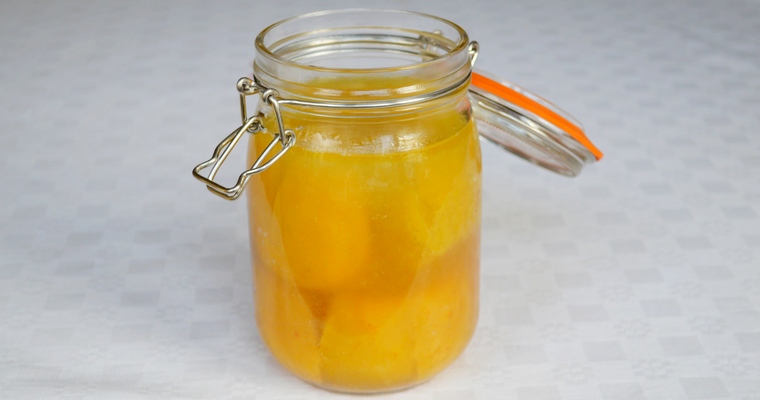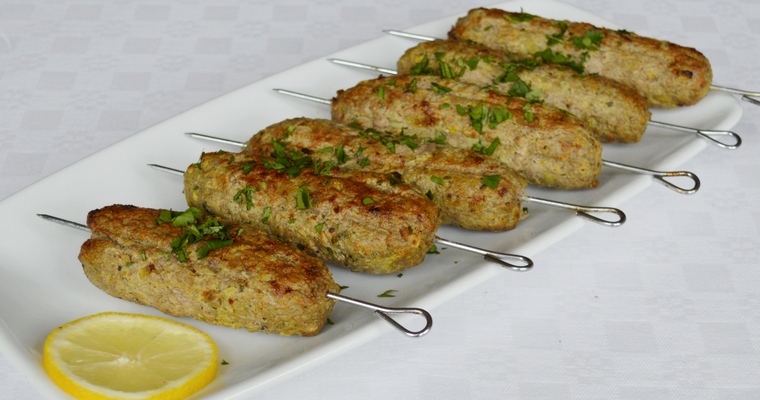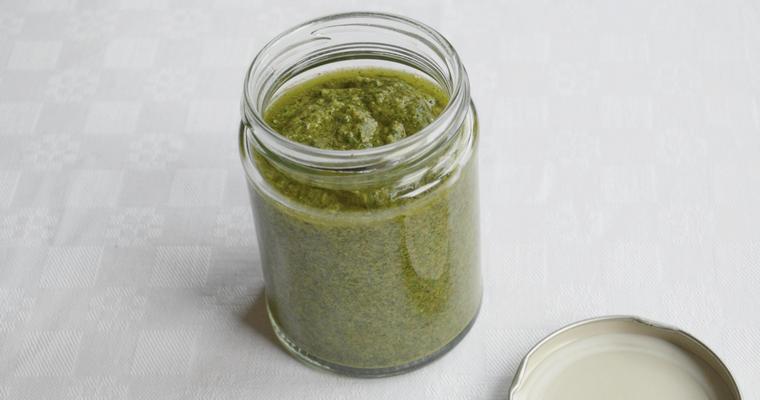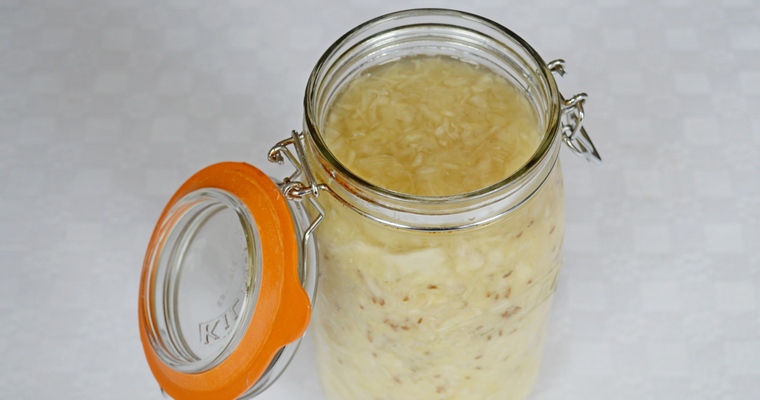Recipe for pickling lemons in a brine of salt and lemon juice for use in north African dishes. Bottles the intense flavour of lemons without the sourness.
| Skip straight to the recipe |
01. What are preserved lemons?
Preserved lemons are lemons that have been pickled in a brine of lemon juice and salt, and then left to age for at least 3 months. When ready to use, the pulpy flesh is discarded. This is because the fragrant essential oil glands are all contained in the peel, while the flesh is rendered inedible by the preserving process, having absorbed a lot of salt from the brine. The softened rind is then rinsed to remove excess salt, chopped to size, and added raw to salads or cooked in liquid or semi-liquid dishes like soups and stews. As the skin is to be eaten, it is best to use organic and unwaxed lemons. If you can only get waxed lemons, you can remove the wax fairly easily at home. Pour boiling water over the lemons to melt the wax, then scrub off under a cold running tap using a vegetable brush.
02. Do preserved lemons have a different flavour to fresh lemons?
Preserved lemons add a depth of flavour to dishes than cannot be achieved by just using finely grated lemon zest. The preserving process concentrates the lemony flavour, but removes the mouth-puckering sourness that usually accompanies it. As the lemons age, the flavour changes and develops umami. Umami is one of the five basic tastes, together with bitter, salty, sour and sweet. It is usually described as ‘meaty’ or ‘savoury’. It is found in fresh foods like black olives, mushrooms, tomatoes, seaweed, anchovies and hung meat, and in aged and fermented foods like balsamic vinegar, miso, nutritional yeast, soy sauce, blue cheese, parmesan cheese, fish sauce and cured meats. Preserved lemons are an example of lacto-fermenation.
03. What is fermentation?
Fermentation is a method of preserving food using bacteria. Whilst most methods of food preservation aim to remove bacteria altogether, or at least slow the rate at which they can reproduce, fermentation actively encourages bacterial growth. Not all bacteria cause food to spoil. In fact, some bacteria are not just harmless but beneficial, in that they create an acidic environment that discourages ‘bad’ bacteria from growing. The acidity of a substance is measured on a scale of 1 – 14 called the pH scale, with 1 being very acidic, 7 being neutral, and 14 being very alkaline. The optimum environment for bacteria is pH 7, but most are able to grow between pH 4.6 and 7. Lactobacilli is an example of a beneficial bacterium, which converts the starches and sugars found in fresh foods into lactic acid.
04. How do I ferment food?
Lactobacilli is naturally present on the surface of all plants. This means that you do not need any specialist equipment or ingredients to ferment food. All you need is some salt to stop the bad bacteria from reproducing during the first few days, before the lactobacilli have had time to produce a sufficient build up of lactic acid. Salt also draws out liquid from the flesh, which means that the food is kept submerged in an oxygen-free enviroment. This is important, as fermentation is an anaerobic reaction – that is, it needs to take place in an environment where there is no oxygen.
05. Why is fermented food so good for you?
Lacto-fermentation doesn’t just preserve food, it enhances the nutritional benefit. Because the starches and sugars have been broken down, food is easier to digest. More importantly, when the live bacteria contained in fermented foods travel to the gut they help to boost and rebalance the gut microbiome for improved digestion and general health. For this reason, fermented foods should not be heated if you want to enjoy the full health benefits, as heating kills the bacteria. Fermented foods are particularly important for people who are dairy-intolerant and cannot get their fill of healthy bacteria from yoghurts, and for those who suffer from digestive disorders like Irritable Bowel Syndrome, or have taken a course of gut microbiome-nuking antibiotics. From a culinary perspective, using fermented foods add an extra flavour dimension to dishes. As fermented foods continue to age the flavours continue to develop and change – creating complex and possibly unique flavour compounds in your jar.
06. What dishes can I use preserved lemons in?
Preserved lemons are a staple ingredient in north Eastern cuisine such as Moroccan tagines. They can be eaten with fish, chicken and red meat. They are a useful ingredient for vegan cooking, as dishes made without meat or cheese can be lacking in umami. This is why mushrooms and miso are so prevalent in vegan cuisine, as they help to create the sensation of meaty savouriness. Just a quarter segment of preserved lemon mashed into sauces or dips like gremolata and hummous can really lift the flavours.
Ingredients
- 6 whole lemons, unwaxed and organic
- 6 tablespoons sea salt
- 6-10 lemons, juice only
- Extra virgin olive oil, to cover
Instructions
- Trim off the stalk end of the organic lemons, being careful not to cut into the flesh. Slice each lemon lengthways into quarters, stopping just before you reach the base so that the segments remain attached at the base.
- Gently open out a lemon and spoon in 1 tablespoon of salt (or as much as you can pack in). Place in a large bowl. Repeat for the rest of the lemons, sprinkling over any remaining salt at the end. Cover, and leave at room temperature for 3 days, for the salt to draw out the juices.
- After 3 days, sterilise a glass jar by putting through the dishwasher on a rinse cycle without detergent, or by boiling in a large pan of water for 10 minutes, and then removing and leaving to air dry.
- Pack the lemons tightly into the jar to stop them from floating above the brine and spoiling. Pour over the lemon juice until the lemons are completely submerged (juice more lemons and top up if necessary).
- Seal the jar and leave at room temperature (the salt will stop the lemons from going off until enough lactobacilli has built up). Once the lemons begin to ferment, they will release gas. ‘Burp’ the jar once a day by opening the lid and allowing the gasses to bubble up and escape. The lemons will take 2-3 days to begin fermenting, and, once this begins, the gasses will be most active during the first 3 days. The whole process should take about 5-6 days in total. Once the lemons stop releasing gas, pour over a generous layer of olive oil to seal.
- Store in a cool, dark cupboard. For best results, allow to age for at least 3 months, until the skins are soft and the flavour is sweet and mellow. The lemons will keep for as long as it takes you to eat them, naturally preserved by the lactobacilli. To use, scrape away and discard the pulp from the preserved lemon, so you’re left with just the rind. Rinse to remove any excess salt and then chop to size.






